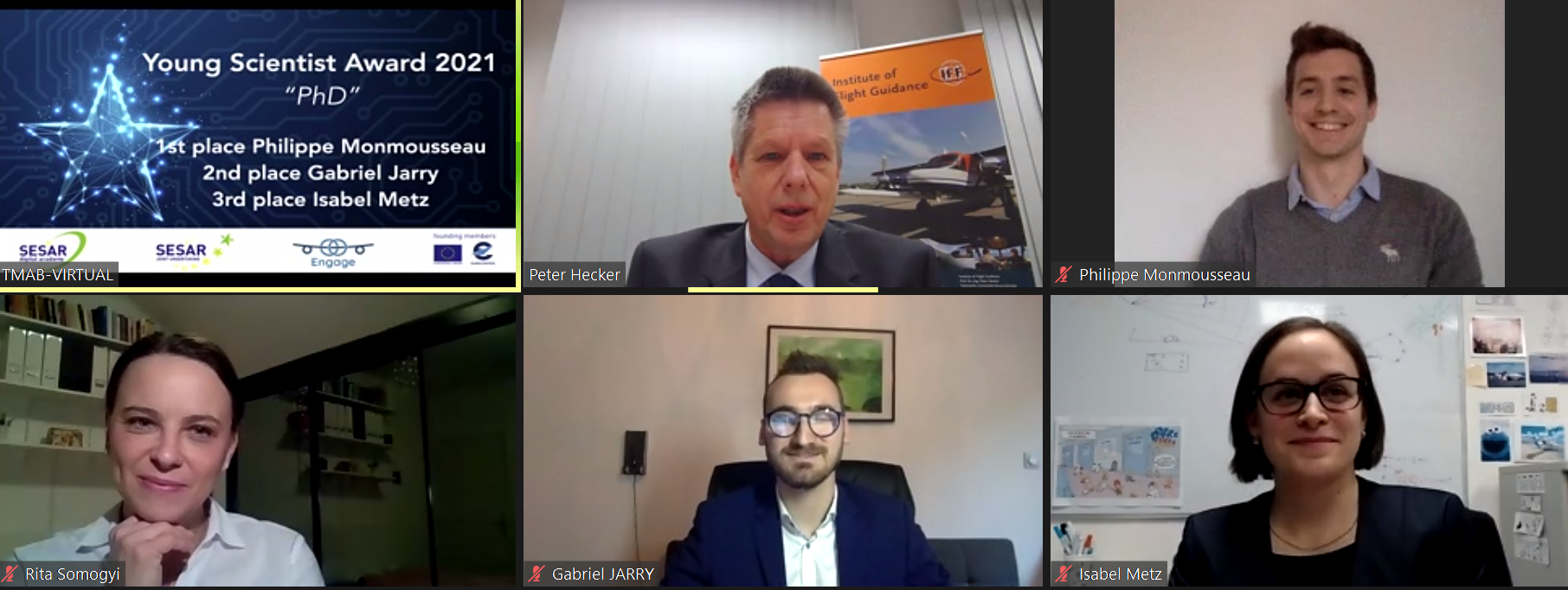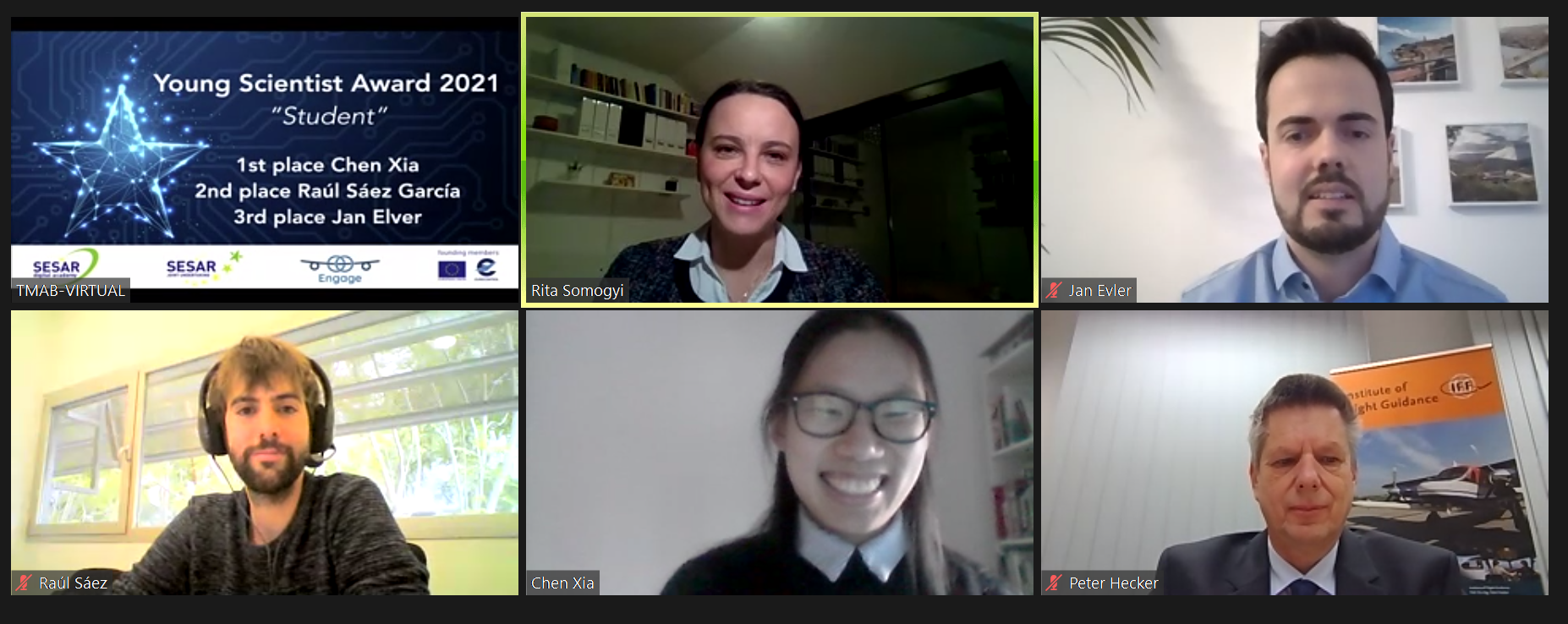Europe’s most promising young minds in air traffic management (ATM) research were celebrated at the SESAR Young Scientist Award ceremony, which took place during the closing plenary of the SESAR Innovation Days virtual conference on 9 December.
Awarded annually, the prize aims to recognise young scientists, who have demonstrated excellence in ATM and aviation-related research fields. The award also provides researchers starting out in their career with an opportunity for further professional development. A further objective of the award is to showcase the potential of young talent to formulate fresh ideas and solutions to the challenges facing ATM and aviation.
The 2021 edition broke with tradition, recognising scientific excellence in two categories; PhD and students (undergraduate/master). The awards were presented during a virtual ceremony, presided over by Dr.-Ing. Peter Hecker, Chair of the SESAR Young Scientist jury and jury member Dr. Rita Somogyi, and featured presentations from all short-listed scientists from both categories.
Taking third place in the PhD category was Isabel Metz, DLR, for her thesis on bird strike prevention, a relatively understudied topic in ATM. The jury commended the research for trying to solve an everyday problem, a solution for which would undoubtedly enhance the level of safety and predictability of air traffic in Europe.
Gabriel Jarry, ENAC, was awarded the second place for his thesis on algorithms for the ground-based detection and analysis of atypical trajectories in the approach phase of flight, which the jury said had potential as a basis for developing new situation awareness alerting systems or novel support decision tools for air traffic control.
The top award in the PhD category went to Philippe Monmousseau, ENAC, for his work on performance-based assessments in air traffic management. The jury commended him for his scientific rigour and for expanding the conventional key performance indicators to include passenger-centric data and interfaces with other modes of transport.

In the students’ category, the third prize went to Jan Evler, Institute of Logistics and Aviation Technische Universität Dresden, for his work on airline schedule recovery. If proven practically viable, the concept could be used for more effective allocation markets in ATM, provided that its uptake can be achieved by all the stakeholders, a step still to cover, the jury noted.
Taking second prize in the category was Raul Saez Garcia Technical University of Catalonia (UPC), who investigated arrival scheduling considering a trajectory based operations using closely spaced objects (CSO). The jury commended the novel approach and scientific excellence demonstrated in his work.
The top prize among the students went to Chen Xia, Universidad Politécnica de Madrid, who addressed conflict anticipation and resolutions to mitigate the risk of mid-air loss of separation. The jury commended Xia for the approach taken and the remarkable level of knowledge and accuracy shown in her thesis.
“I want to congratulate all the applicants, short-listed candidates, and our overall winners, Philippe Monmousseau and Chen Xia. These are the ones to watch, the talent that will help us deliver on our promise of a Digital European Sky!” said Richard Frizon, Executive Director ad interim of the SESAR Joint Undertaking.

